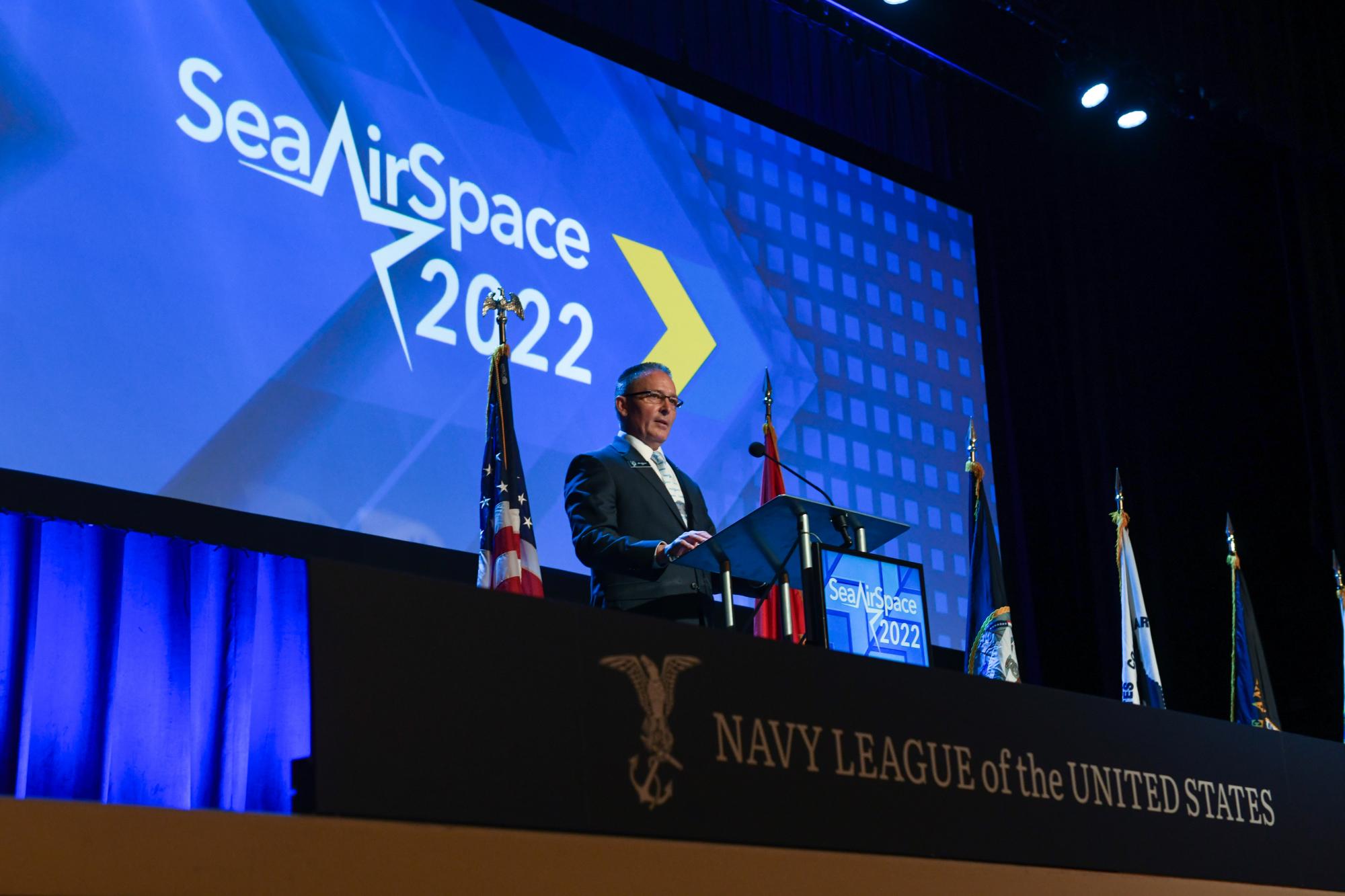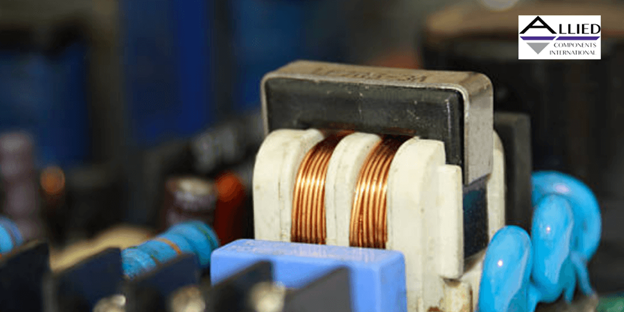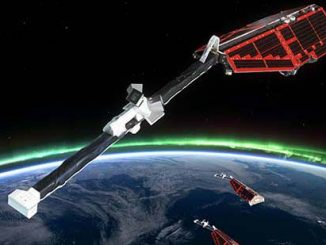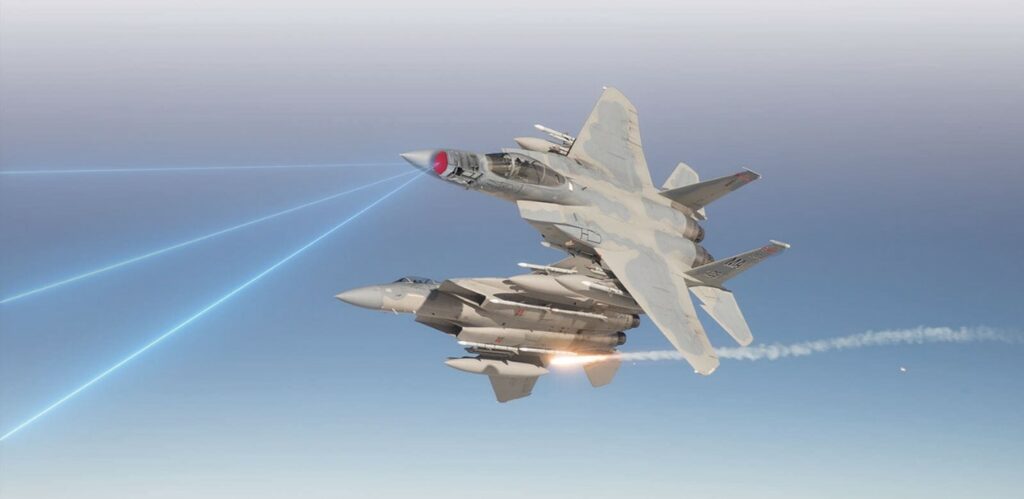
In the unrelenting global race for air combat superiority, the progressive development and integration of Active Electronically Scanned Array (AESA) radar has become an industry standard for virtually all new fighter jets. Additionally, many older aircraft are being retrofit to incorporate the radars because it provides what Lockheed Martin, whose subsidiary Northrop Grumman is the largest provider of the systems, describes as “first-look, first-shot, first-kill capability.”
Leading defense contractors globally are tasked with providing the systems through a stream of military contracts. Top players include Lockheed Martin and its subsidiary Northrop Grumman, BAE Systems, Leonardo, Raytheon, Thales. As the systems have increasingly proven their merit, military and defense organizations worldwide have spurred advancement of the technology, competing for the latest advantage. Adapting AESA to warships, land systems and surveillance drones have also become important in its continuing development, leading to commercial aviation and maritime uses.
From a magnetics research & development standpoint, some of the more exotic work has focused on developing integrated magnetic components such as circulators, isolators and inductors on semiconductor substrates to reduce size and enable new functionality for military electromagnetic systems.
Power electronics & magnetic components play key role
At the sub-system level, high-reliability power electronics and magnetic components play a key role in the technology for enabling pilots to detect an enemy aircraft quickly and with stealth, fire a missile, and neutralize the target without giving the opposing pilot a chance to respond.
Among those elements are essential power systems and magnetic products such as those provided by Espey Mfg. & Electronics Corporation and other sub-system suppliers. Espey, whose primary business is the development, design and production of specialized military and industrial power supplies and transformers, is actively engaged in several AESA radar programs, providing essential power systems and magnetic products to support the cutting-edge radar systems.
Comments David O’Neil, Espey CEO, “As AESA radar systems continue to advance and integrate into multiple flight platforms, Espey stands alongside its customers, supporting their power system requirements. We take great pride in our role as a key participant in advancing this groundbreaking technology and the essential power enhancements that accompany it.”
From its 150,000-plus square foot facility in Sarasota Springs, New York, Espey is a top supplier of power conversion, magnetics and built-to-print products as well as dynamic life-cycle management services for military and industrial programs. It maintains all the necessary facilities of a specialty magnetics manufacturer including the capabilities of a power transformer and power supply design manufacturing operation.
Publicly held, Espey reported in February on its fiscal quarter ending on December 31, 2024, registering a 17% increase in sales to $10.3 million compared to $8.8 million for the same period a year earlier, with profits climbing 56% higher to nearly $1.8 million. It also was recently awarded a Partner2Win supply chain award from BAE Systems’ Combat Mission Systems unit.
AESA programs are far-reaching
For prime defense contractors, the AESA programs for both new and retrofit applications are far-reaching. A few examples are given here. One example of the retrofit programs is that more than 70 F-16 Fighting Falcons across a dozen Air National Guard units are now flying with the new active electronically scanned array radar in projects handled by Northrop Grumman.

“(With the F-16’s previous APG-68 fire control radar), I had the ability to target up to two tracks, that’s it,” said Lt. Col. Michael Trujillo, District of Columbia ANG’s 113th Aerospace Control Alert Detachment commander, the unit responsible for the air defense of the national capital region. “At that point, my radar is completely saturated and has no more bandwidth. With the AESA radar, (without getting into) specific numbers, I can target more things than I can shoot.”
Northrop Grumman

In new and next-generation craft such as providing the new F-22 Raptor with air-to-air and air-to-ground superiority, the AN/APG 77 AESA radar builds on Northrop Grumman’s design experience with AESA fire control radars and sensors over decades of AESA development.
Northrop Grumman engineers have continuously improved their designs and reduced the cost while expanding capabilities that are reflected in the latest AN/APG 77 AESA radar. It provides an unprecedented stealth capability in air-to-air combat, allowing the pilot to track and shoot at multiple threat aircraft before the adversary’s radar detects the F-22 Raptor. Solid state-of-the-art technology and elimination of mechanical moving parts enables the AN/APG-77 to leap ahead of previous standards for system reliability and sustainability, notes the company.
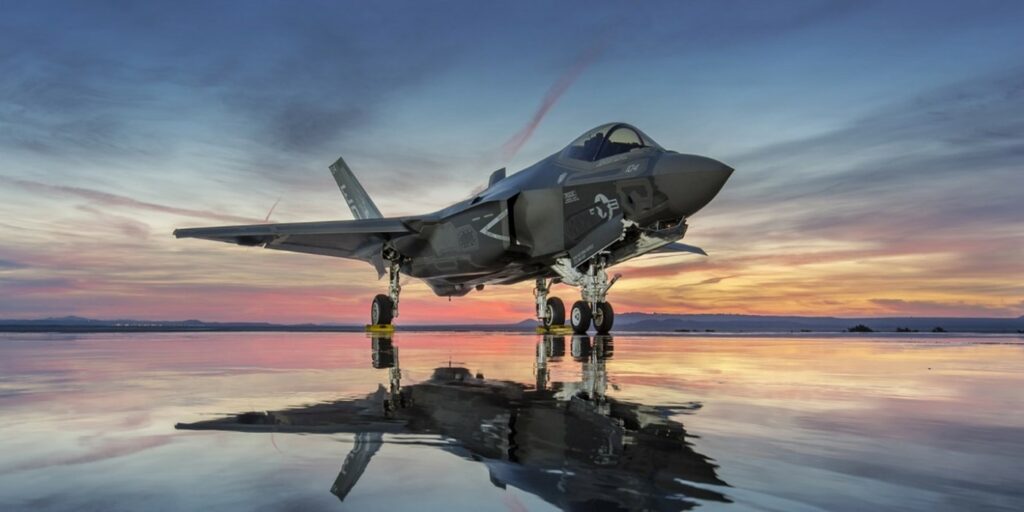
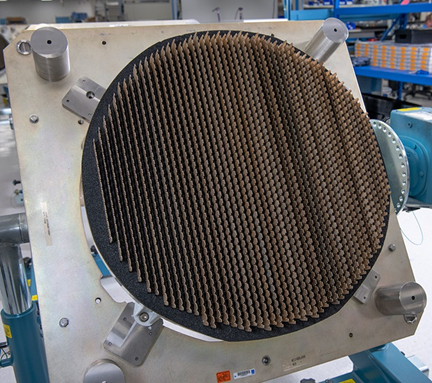
The Northrop Grumman AN/APG-81 active electronically scanned array (AESA) fire control radar is the latest and most capable AESA in the world and acts as the cornerstone to the F-35 Lightning II’s advanced sensor suite, says the company. It has long-range active and passive air-to-air and air-to-ground modes that support a full range of air-to-air and air-to-surface missions complemented by stealth features along with significant electronic warfare and intelligence, surveillance and reconnaissance functions.
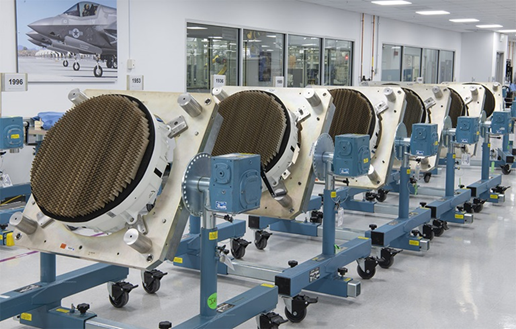
AESA projects by BAE and Leonardo
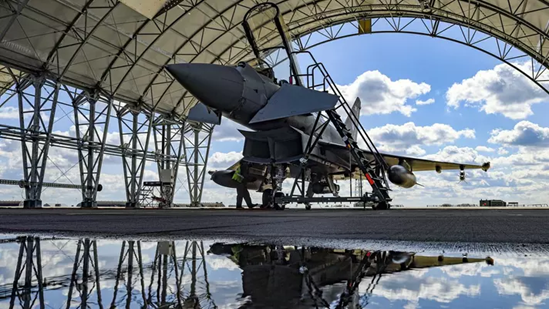
BAE Systems and Leonardo are among others active in AESA programs. Working together, they recently fit an advanced AESA radar to a Eurofighter Typhoon fourth generation fighter jet for the first time, in preparation for the maiden flight of the system later this year. The companies said the European Common Radar System (ECRS), Mark 2 (Mk2) prototype, which features a multi-functional array for search and tracking and electronic warfare functions, was installed on BS116, a UK test and evaluation Typhoon jet by engineers at BAE’s Warton production facility in northern England. The installation follows months of ground tests “in a unique facility” at the Warton site, added the manufacturers. They said that the radar will be “able to locate and deny use of an adversary’s radar with a powerful electronic jamming attack, whilst staying beyond the reach of threats.”

Ross Wilson, Vice President of Engineering, Radar & Advanced Targeting at Leonardo UK, said that alongside the prototype radar integration work, “ECRS Mk2 production design has also been progressing apace.” He added that the radar’s processor, receiver, and antenna power supply and control units have “all been re-engineered to further enhance the capacity, capability, and performance of the Mk2 system in alignment with the new antenna and electronic warfare capability.”
Thales

Thales, another active provider of AESA systems, is supplying state-of-the art AESA radar for the Rafale, a French twin-engine, canard delta wing, multirole fighter aircraft designed and built by Dassault Aviation. The radar has been designed in close collaboration with Dassault Aviation and DGA -French defense procurement agency to meet expectations of Air Forces by combining advanced fire control radar detection and target tracking capabilities. It is combat proven on board the Rafale for the French Air Forces. The Rafale is also used by Egyptian, Qatari, Indian, Greek, Croatian, UAE and Indonesian Air Forces.
Raytheon
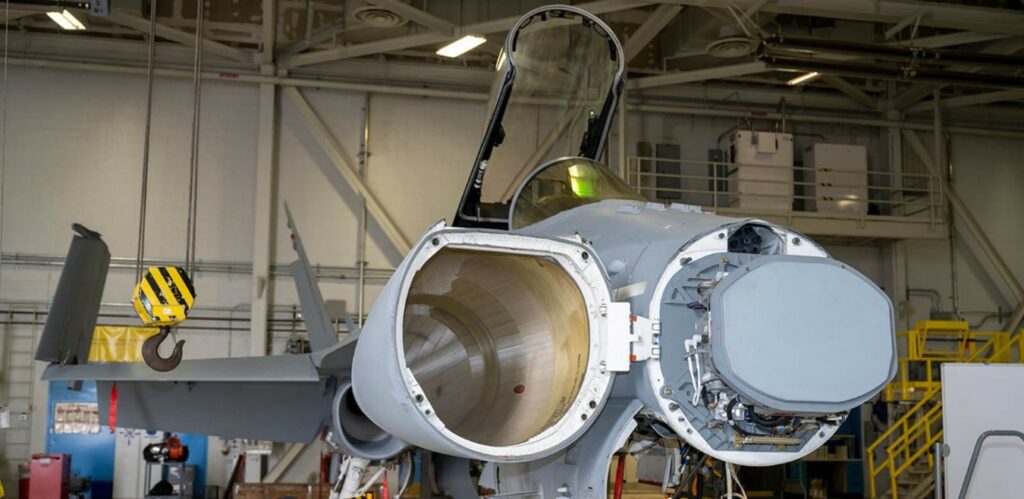
Raytheon’s Intelligence & Space business unit is another leading provider of AESA radar for military aircraft and other applications. Now outfitted with Galium Nitride technology, Raytheon Intelligence & Space’s AESA radars provide aircrews with increasingly greater engagement ranges, accuracy and reliability.
Defense research & development paves the way
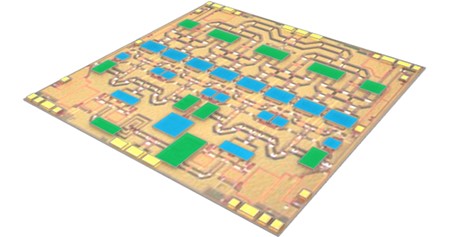
As AESA systems have evolved, research and development efforts have stimulated advancement in many of the product iterations. A prime example is the five-year $26 million Magnetic Miniaturized and Monolithically Integrated Components (M3IC) program sponsored by the U.S. Defense Advanced Research Projects Agency (DARPA) aiming to integrate magnetic components onto semiconductor materials, improving the size and functionality of electromagnetic systems for communications, radar, and electronic warfare.
The objective was to develop tighter integration of electronic and magnetic components that could yield smaller radar systems, higher bandwidth communication over longer ranges, improved jam resistance, and more resilient EW systems. The program was divided into three technical areas: integration of magnetic materials and systems with semiconductor technology; accurate and efficient modeling of magnetic phenomena from the molecular to the component system level; and exploitation of magnetic phenomena in innovative component designs relevant to electromagnetic systems important to DoD. By finessing minitiaturized magnetics into the microelectronics mix, chip-friendly magnetic materials combined with microelectronics could provide a portal to a new generation of magnetics-boosted circuits.
Among companies playing an active role in the projects were Northrop Grumman, Metamagnetics and Qorvo. Several research papers and project reports reviewed aspects of the work:
“Design RF Magnetic Devices With Linear and Nonlinear Equivalent Circuit Models: Demystify RF Magnetics With Equivalent Circuit Models” was published in IEEE Microwave Magazine, Vol. 23, Issue 11.
“Monolithically Integrated Self-Biased Circulator for mmWave T/R MMIC Applications” was published in proceedings of the 2021 IEEE International Electron Devices Meeting (IEDM). It reported on the first-time demonstration of monolithically on-chip integrated circulator devices through the direct integration of polycrystalline hexaferrite magnetic material with GaN/SiC wafers. A full-duplex transmit/receive (T/R) MMIC, the first of its kind that is fully integrated on a semiconductor wafer, was demonstrated as enabled by this monolithically integrated circulator technology, showing over 100 times in size miniaturization as compared to conventional technology with promising applications in radio frequency (RF) electronics technologies for 5G and beyond.
“On-Chip Miniaturized Magnetic Isolators: Standalone Devices and Integration With III-V MMICs” was presented by researchers with Northrop Grumman and Metamagnetics, reporting on the successful demonstration of a heterogeneously integrated MMIC that is comprised of an amplifier and a miniaturized isolator on the same die, accomplished without the use of any post-integration tuning; also on the small-signal performance of standalone isolators that were characterized for repeatability and temperature stability. The presentation was at GOMACTech 2021, the annual Government Microcircuit Applications & Critical Technology Conference.
Leonardo a product development leader
Leonardo provides another example of the relentless development as it continues to push the envelope for system standardization and broader application in naval operations, drone platforms as well as for commercial maritime and aviation use. Through AESA, it has enabled new uses for surveillance radars that were previously not possible, particularly with its Osprey programs.

At the forefront of AESA radar development for over three decades, Leonardo has been a leader in shifting the market shift away from specialized radars for specific missions to multi-role and multi-domain radars that can be used across various tasks. As a result of this experience and internal R&D investments, Leonardo developed the Osprey 30 and Osprey 50 AESA radars. Now, it leads the consortium developing the Eurofighter Typhoon Captor radar, its Raven ES05 AESA equips Saab’s next-generation Gripen jets and its Osprey and Seaspray radars are used by the UK and US Coastguards.
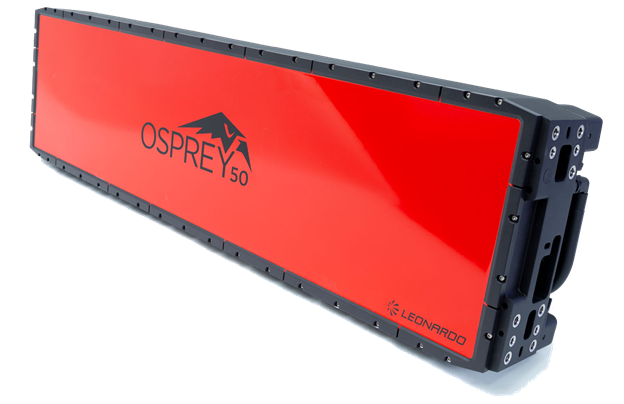

Integration on platforms such as twin turboprops and business jets have been a popular application for the Osprey series, a dynamic that is expected to continue for years to come owing to the benefits that these aircraft have in payload, endurance and range. Both Australia and Italy will operate Gulfstream G550-based Airborne ISR and Electronic Warfare aircraft integrated with Osprey 50 radars and, most recently, Sierra Nevada Corporation has chosen Osprey 50 for their RAPCON-X ISR aircraft.
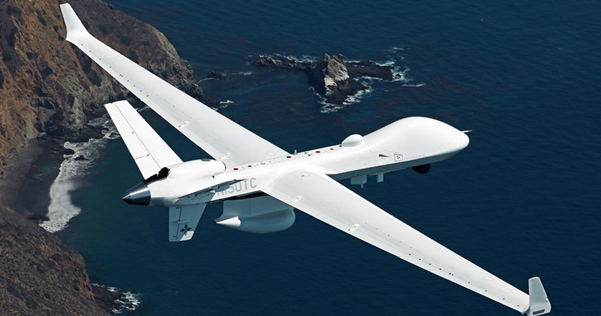
The integration of Seaspray 7500E onto the General Atomics MQ-9B SeaGuardian is another example of Leonardo’s successful UAV sensor pedigree, especially in the maritime domain.
Leonardo continues to work with OEMs on integrating its radar technologies into uncrewed platforms, striving that the cost of integration for end users is minimized and the overall solution is optimized for the specific platform.


